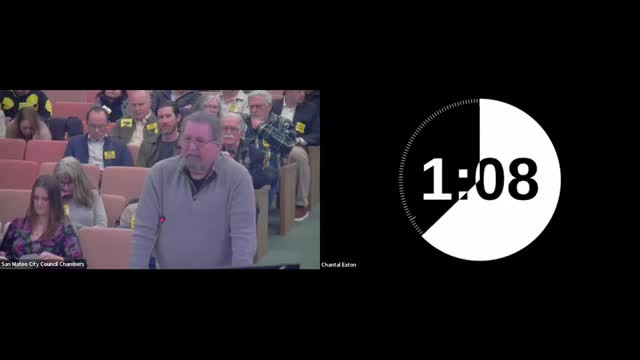San Mateo City Council considers ban on artificial turf amid health and environmental concerns
January 23, 2025 | San Mateo City, San Mateo County, California
Thanks to Scribe from Workplace AI and Family Portal , all articles about California are free for you to enjoy throughout 2025!

This article was created by AI using a video recording of the meeting. It summarizes the key points discussed, but for full details and context, please refer to the video of the full meeting. Link to Full Meeting
One of the most compelling discussions centered around the controversial use of artificial turf in public spaces. Griffin Lee, a junior and member of the Youth Climate Action Team, highlighted the dangers associated with artificial turf, particularly the presence of PFAS—chemicals linked to serious health risks. He urged the council to consider a ban on artificial turf, citing studies that show higher injury rates among athletes playing on turf compared to natural grass. Lee's call for action was echoed by fellow youth activist Selena Zhang, who emphasized the environmental impact of artificial turf, advocating for a moratorium to protect both community health and the environment.
As the meeting progressed, Trina Pierce, a resident of North Central District, voiced her frustrations regarding the council's focus on bike lanes and community safety. She challenged the council members to consider the realities faced by residents in her district, where overcrowding and a lack of resources have left many feeling unheard. Pierce's passionate plea underscored the disconnect between city planning initiatives and the lived experiences of community members, particularly seniors who have been disproportionately affected by the pandemic.
The council also addressed the need for an update to the city's historic preservation policies. Zachary Dahl, the director of community development, presented a proposal for a professional services agreement aimed at revising the city's historic preservation ordinance. This initiative, which has garnered significant community interest, seeks to balance preservation efforts with other city priorities, such as housing and local business support. The council is considering options for moving forward, including a comprehensive approach that would involve community engagement and input.
As the meeting drew to a close, it was clear that the discussions held within those walls would shape the future of San Mateo. The voices of residents, particularly the youth, are increasingly influential in guiding city policies, reflecting a community eager for change and a commitment to addressing both environmental and social challenges. The council's next steps will be crucial in determining how effectively they can respond to these pressing issues and foster a more inclusive and sustainable San Mateo.
Converted from City Council Regular Meeting 1/21/25 meeting on January 23, 2025
Link to Full Meeting
Comments
View full meeting
This article is based on a recent meeting—watch the full video and explore the complete transcript for deeper insights into the discussion.
View full meeting
